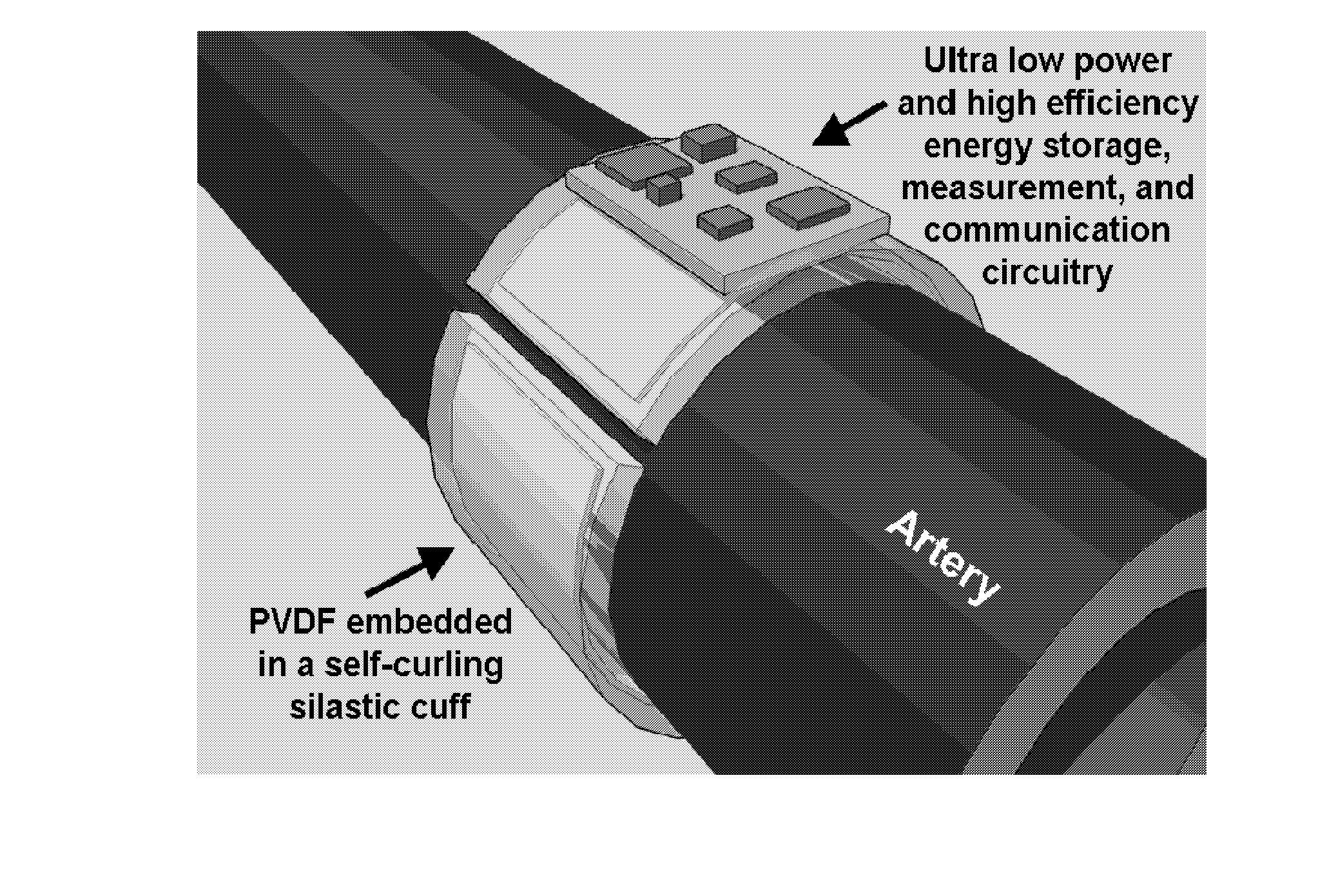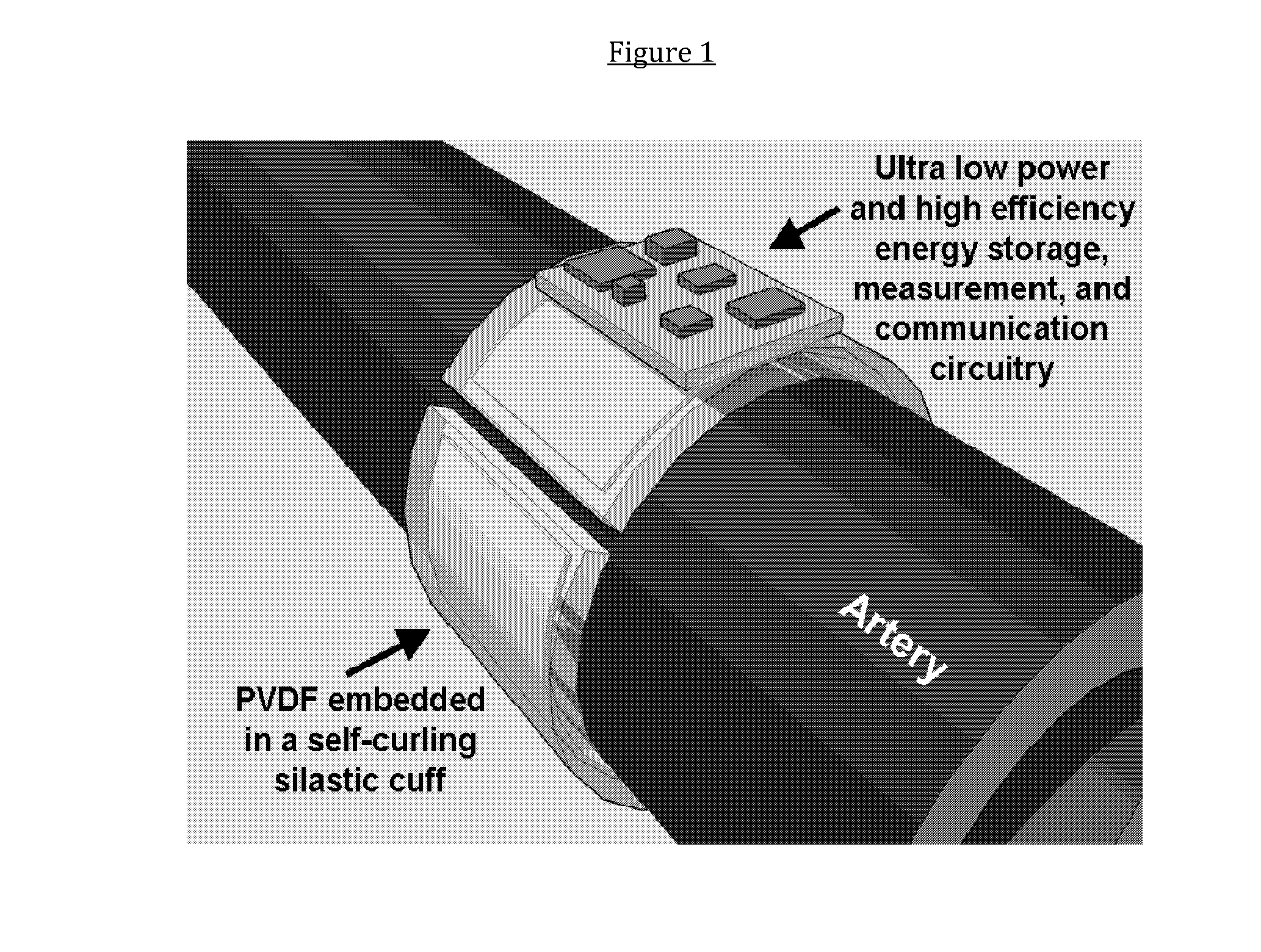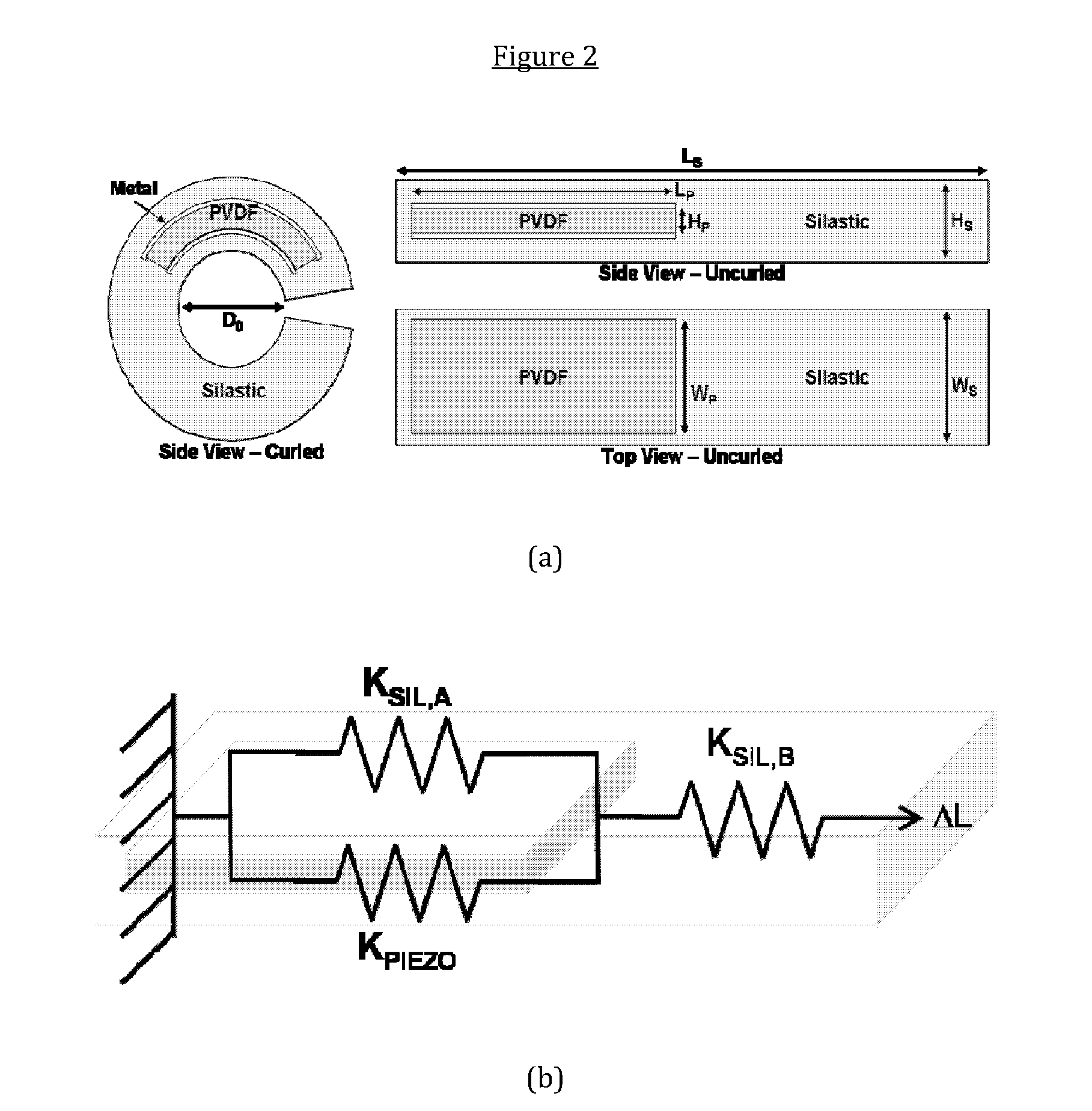In Situ Energy Harvesting Systems for Implanted Medical Devices
- Summary
- Abstract
- Description
- Claims
- Application Information
AI Technical Summary
Benefits of technology
Problems solved by technology
Method used
Image
Examples
example 1
An Arterial Cuff Energy Harvester for Implanted Medical Microsystems
[0054]This example describes a miniature implantable power source that harvests (or scavenges) energy from the expansion and contraction of a mock artery. The energy harvesting element of the 0.25 cm3 device utilizes a piezoelectric thin film embedded within a flexible, self-curling medical-grade silicone cuff. Such an element can enable self-powered implanted microsystems with near-continuous operation, increased lifetime, reduced surgical replacement, and minimized or eliminated external interface requirements compared to conventional implanted medical devices. The fabricated device described in this example generates up to 16 nW when tested around a mock artery. Microfabricated versions of such an energy harvesting element should be capable of generating power outputs of greater than 1.0 μW.
I. INTRODUCTION
[0055]The example describes an arterial cuff energy scavenging (ACES) device that, for the first time, conver...
example 2
An Autonomous, Self-Powered Implanted Medical Microsystem
[0073]This example describes an autonomous implantable microsystem having an integrated energy harvesting device according to the invention. This microsystem device integrates an arterial cuff energy-harvesting device as described in Example 1, above, into a blood pressure sensing system with energy storage, measurement, and data storage circuitry (see FIG. 1). Blood pressure sensing is accomplished using a capacitive strain sensor utilizing a varying gap distance. The circuitry necessary to make the self-powered system will utilize low-turn-on-voltage diodes and low-leakage capacitors to rectify and store the electrical signal generated by the energy harvester. This stored energy will then be utilized by the device's blood pressure sensing system to periodically monitor blood pressure within the artery about which the implantable microsystem is deployed.
[0074]A block diagram of the complete the implantable microsystem is show...
example 3
Autonomous Implantable Microsystem Model
[0076]This example describes a representative circuit topology (see FIG. 8(a)) that can be used to simulate or test energy harvesting devices according to the invention. In this circuit the energy harvesting element (e.g., one comprised of a PVDF strip) is modeled as a voltage source in series with a capacitor. The energy storage circuitry utilizes a voltage doubler topology with two storage capacitors. The load is modeled as a resistor that is periodically switched on to draw power from the storage capacitors. As the artery expands and contracts, voltage generated by the PVDF film is rectified and charges up the load capacitors, CL1 and CL2. The results of a simulation of the circuit using values from the device described above in Example 1 are shown in FIG. 8(b). In this simulation, approximately 50 minutes was required between measurement cycles. The dips in the voltage represent two simulated measurement cycles that consume 2 μW of power f...
PUM
 Login to view more
Login to view more Abstract
Description
Claims
Application Information
 Login to view more
Login to view more - R&D Engineer
- R&D Manager
- IP Professional
- Industry Leading Data Capabilities
- Powerful AI technology
- Patent DNA Extraction
Browse by: Latest US Patents, China's latest patents, Technical Efficacy Thesaurus, Application Domain, Technology Topic.
© 2024 PatSnap. All rights reserved.Legal|Privacy policy|Modern Slavery Act Transparency Statement|Sitemap



